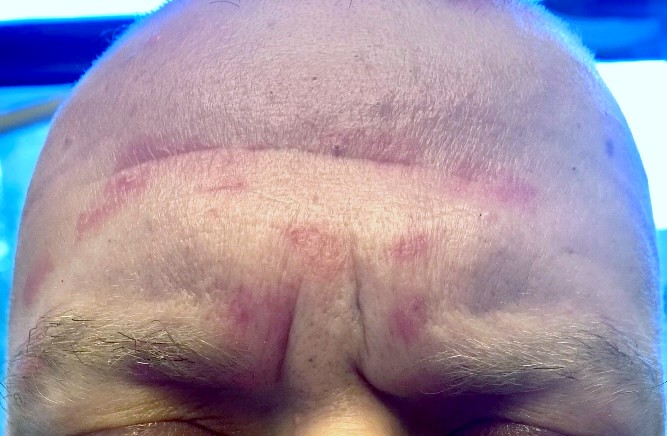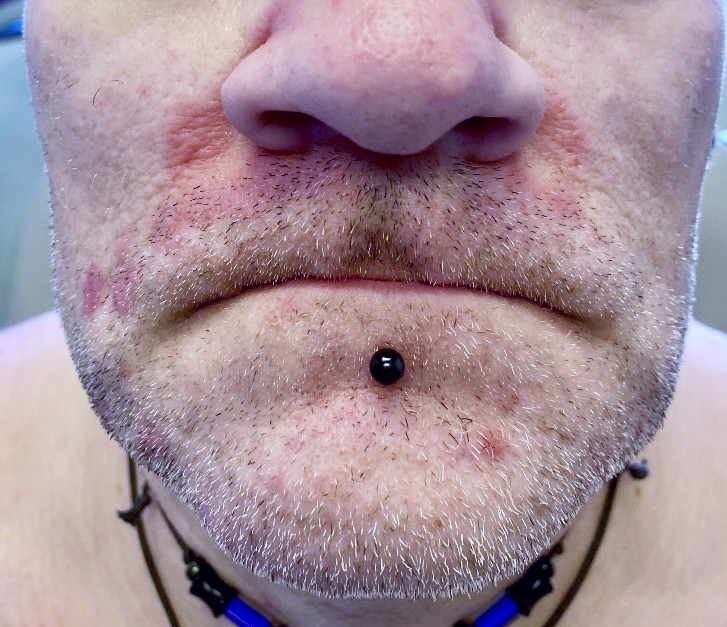Dr. Ted Rosen discusses using oral fluconazole (300 mg) to treat an itchy, red facial rash in a patient with a history of seborrheic dermatitis and multiple allergies to the preservatives in topical therapies.
By Ted Rosen, MD, FAAD
Editor-in-Chief
Oral Antifungal Treatment for Facial Rash
A 58-year-old man has had an itchy, red facial rash for about one year. He is greatly bothered by the eruption because of its unsightly nature (Figures 1 and 2) and accompanying severe pruritus. The latter even interferes with sleep. He was previously given the diagnosis of seborrheic dermatitis by his primary care physician. However, a confounding factor is that he has significant allergies to many preservatives and has experienced acute allergic contact dermatitis when using several topical steroids, topical ketoconazole cream, and topical crisaborole. He also has a known allergy to sulfa agents.


His other major comorbidities include hypertension (for which he receives Lisinopril) and a past history of latent tuberculosis (for which he took isoniazid in the distant past).
He really prefers to “take something by mouth” rather than try any topical medication.
What might you give him?
Since seborrheic dermatitis is felt to be, in many patients, a low-grade hypersensitivity to commensal Malassezia yeast forms residing in sebum-rich skin, anything that effectively eliminates or significantly reduces these organisms might be useful. In fact, as might be expected, both oral itraconazole and oral fluconazole have proven beneficial for seborrheic dermatitis when traditional topical interventions failed or were contraindicated for one reason or another.1,2 Interestingly, although terbinafine is not thought of as a drug useful for yeast forms, it performed clinically even better than fluconazole in a head-to-head trial.2 Thus, all three of these commonly utilized antifungal agents might serve as oral substitutes for topical treatment.
In this particular case, due to the propensity for drug-drug interactions and the possibility of congestive heart failure development, itraconazole was not selected. The patient preferred the once weekly dosing of fluconazole (300 mg) to daily terbinafine. In four weeks, he cleared almost completely.
References:
- Ghodsi SZ, et al. Efficacy of Oral Itraconazole in the Treatment and Relapse Prevention of Moderate to Severe Seborrheic Dermatitis: A Randomized, Placebo-Controlled Trial. Am J Clin Dermatol. 2015;16(5):431-7.
- Alizadeh N, et al. Comparison the efficacy of fluconazole and terbinafine in patients with moderate to severe seborrheic dermatitis. Dermatol Res Pract. 2014:705402. doi: 10.1155/2014/705402

